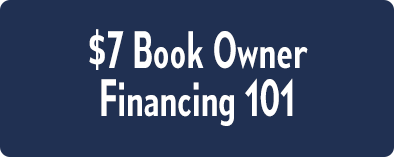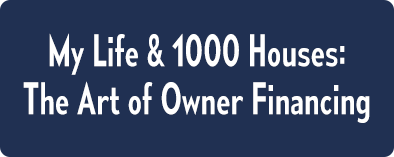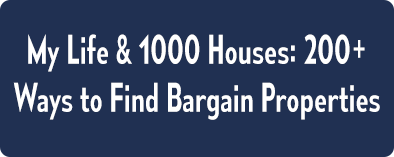PODCAST
Connecting With Wholesale Buyers With Tye Glover
Episode 523: Connecting With Wholesale Buyers With Tye Glover

By connecting homeowners with wholesale buyers, both make strong profits by removing the middlemen. Tye Glover, the Founder of Invest Out, shares with Mitch Stephen his challenging experience of going through a divorce and having to sell his property. Connecting with wholesale buyers not only increases profit. It also provides considerable improvements to your home to increase its value. Do you want to know more about connecting with wholesale buyers? Then this episode’s for you. Tune in!
—
Watch the episode here
I am here with Tye Glover. We’re going to be talking about a couple of things. One, he has a company called Invest Out, where he teams up investors with homeowners. They can strategize to bring the house to market and share profits. Number two, there is the ideation tower, which is a way to run multiple projects together at one time. We’re going to work our way through two of the topics because they, in a way, mesh.
—
Tye, how you’ve been doing?
I’ve been doing well. As I mentioned before, I was COVID positive, but I’ve been doing great during this whole period. I have no complaints at all.
You’ve got to stay positive. There are many changes, but we did well during the COVID time too. I know others weren’t that fortunate, but we got our prayers up for everybody. Let’s start with you. Where are you from? What are you doing?
I’m out of Philadelphia. I have been here probably since 2002 when I moved out to New York City. I went through some trials and tribulations and a process of a divorce that was highly destructive. From that event or that experience, this whole idea of Invest Out came to play. It was a matter of me, first of all, trying to minimize the risks associated with that divorce and losing everything.
I was looking for ways to get rid of a property that needed a lot of work to be done without losing my shirt because that’s what I was as pretty much being offered. From those obstacles and challenges, I was able to create a concept. That’s a whole maximize opportunities part. I worked to minimize risk and maximize opportunities. It worked out well for that one.
Let’s talk about Invest Out first. Tell us, in a nutshell, what Invest Out is.
Invest Out has been adjusting and changing since I’ve been getting more experience about the marketplace itself. In a nutshell, we’re a marketplace. First of all, we partner with homeowners who know their homes could sell for more if renovated with investors who want to get in there. They don’t want to buy the home because that means more capital available for other renovations. They want to come in and do the renovation, and then once the home sells, they get their money and walk away.

Wholesale Buyers: We partner with homeowners who know their homes could sell for more.
That homeowner gets considerably more money because the home is now sold at maximum value, but we’ve also opened it up for wholesalers. The big thing is allowing people, especially on the sales side, to be able to see the financials when they may not understand the numbers. Here, you are putting in some basic information about that property. Whether you’re a wholesaler or a homeowner, or even a realtor, obviously people want to know the description, number of rooms, square footage overall, and all those details.
As importantly, if you’re going to sell it, how much do you want to sell that property for? If you want to partner as a homeowner or a realtor, what is the deal as far as how you want to partner? Meaning that you’re putting in there what you believe to be the current value of the home. In its current position, I believe it is A) X value, B) It needs about X or Y amount of increase, a certain amount of investment to go into that property, and then C) Once it’s sold, it can sell for a certain amount.
With those three pieces of information, that homeowner can easily calculate what’s in it for them. If they decide to sell it directly out to that investor, or if they decide to partner with that investor and raise the value, they get to see exactly how much additional money they’re going to make. The best part about it, Mitch, is that the homeowners don’t have to share their information. They won’t have people contacting them or trying to call them about the property itself on the marketplace.
Figure out a way to bring your projects to fruition, so they don't die with you. Share on XThey put it out there, offers can come in, and they can decide which investor potentially they may want to talk to. That was important for me. The pain itself of going through the potential loss of a property, let alone the challenges associated with my ego of having to talk to investors who know my situation, or at least think they know my situation. That was difficult but being able to create an anonymous environment where people can decide, are we in the same ballpark? Once you decide you’re in the same ballpark, you accept that offer. Now, you guys can start talking and having that conversation about the possibilities and see whether you’d like to move forward or not.
Tell us about your success stories within Invest Out.
It’s taken us so much time to get the communications together about what homeowners want to see because we were not talking about people who necessarily know about the numbers. They need it cut and dry and clear. It’s the same thing with investors. They want it to be very clear. It’s taken us a while to get there. I use the concept of being nearer than before. I recognize the fact that I can’t do all this stuff. I’m not going to get venture capital money. 0.05% of the people will need and want to get venture capital money, which means it’s not going to happen for me.
I’ve had to figure out a way to bring these projects to fruition so they don’t die with me. Using a concept with nearer than before, I’m not thinking about that compressed timeline of, “It’s got to be there right now.” I can take my time, move that project forward slowly, methodically, making sure that when things need to be done, I’m having those things done. Most of the time, when it comes to any of these projects, it’s sitting, hurrying up, and waiting. Therefore, I can take advantage of that time and that time changes everything.
Tell us a little bit about the struggles of building software. I’ve been through it m

Wholesale Buyers: Ideation is about creating the solutions you need for the problems you’ve outlined at any given step along the way.
yself. Everything takes ten times more money and ten times longer than you think, but how do you persevere?
A big concept again, more near than before, and recognizing that things take time. If you put out that budget or you expect you’re going to put out a certain amount of money, you’re probably going to have to double it. Whenever I talk to a developer, they ask me that budget, and I never tell them a budget because I guarantee they will live up to that budget.
I always tell them to tell me how much it’s going to cost them and then I can decide whether we were in the ballpark. To your point, it can be a challenge, but I’ve been in the IT field for many years. I know how to do things that can help them move the process forward. I’ve been using Fiverr and Upwork since 2010. I have gotten a lot of experience bringing these servants online and letting them do all my work while I’m doing more important things.
That’s Invest Out. When that comes available, let us know. We will push it out. It is a way to put homeowners who know their houses need renovations to get the maximum price together with investors who know how to get it there, and then they share the upside of that increase.
It’s also about wholesalers. You’ve got wholesalers that find a property. They have that property for a preset period of time. A lot of times, they don’t necessarily know who to talk to or how to get that home in front of an eye, a possible investor or an aggregator. It is also that way. It’s $9 a month and your first month is free. You can load any number of properties that you want onto that site. Not only are you getting that property in front of more eyes, but you’re also getting more offers and seeing the financials calculate it directly for you there.
It takes a lot of the work away from having to go and figure out how you’re going to move that property. Now you’ve got a marketplace where you can post it at a very affordable price. Once you get it posted, you can share it on Facebook. You don’t have to worry about it just staying there. You can share it around your community.
It’s also going to help the wholesale community. Is there anything else we need to know about Invest Out or should we move on to the ideation tower?
Most of the time, when it comes to any project, it's sitting, hurrying up, and waiting. Take advantage of that time. Share on XThat’s the key, being able to bring people together to create that bridge and make it easy to understand the numbers, even for that novice wholesaler who is just getting into the game. There are a lot of questions about how much I should be asking, how much I should offer to the homeowner, and so forth. It helps to remove those questions from the table because it gives you the number based on what you input.
If you guys want to know more about Invest Out, go over to 1000Houses.com/Tye, and learn about Invest Out. Talk to Tye about it and see if it’s right for you. I also want to talk about this ideation tower. Talk to me about ideation.
That’s been my passion. We all have things that we know we’re good at. That’s one thing that I call my instinctive advantage. I’m naturally inclined to try to find ideas and solutions where nothing exists. Probably most folks, even in your audience, have those stats and notebooks piled up with designs, drawings, and things that they were going to do. These things may still be highly viable concepts.
I think about what Les Brown said when he was talking about the fact that his greatest fear is lying on his death bed and having the ghost of all those ideas that he had ever thought of come to him and say, “What happened? Out of all the billions of people we could have gone to, we came to you, and now we die with you.”
That’s been my greatest fear as I go from one project to another idea. I recognize the fact that time moves on, and I’ve got a certain amount of time to be able to bring these ideas to fruition. That’s what started me thinking about how I manage my projects. I think about it in terms of an airport. I’ve got my new routes, those ideas that you think of at the top of your head. They may have no value to them. You’re not going to consider them much further, but you want to jot them down because it may be something you want to come down to or come back to.
The next one is what I call outbound gates. These are the projects that may have moved on from the new routes or you’ve given a little bit more thought to. You may have checked out. Is there a market there? Is there an opportunity? Whatever you want from an idea, that’s what you’re looking for. If it passes that gate, it goes to taxi out.
At this point, we haven’t spent any money. It’s more so a matter of figuring out whether these projects are something that you can do or not. One thing that you do there is you do what’s called a well-informed outcome for outbound gates. You recognize the fact that, “What do I need to bring this to fruition? Who needs to be involved? What resources? What is my potential timeline for bringing this to fruition?” The biggest question you’ll ever ask yourself is, “Can I do this?”
If you can’t do it, there’s no reason to move it further into any of the gates. If it passes that gate, you’re moving it on to take off. Take off is where you’re starting to expand either that capital, time and energy because you’re moving that project. If you think about it from an airport standpoint, the most important times or dangerous times for a plane are that takeoff and landing.
I think of it the same way, which means I focus my attention on the activities taking off and landing. Once it is in the air, that’s cruising. This is where most of the projects may spend 1, 2, 3, or 5 years if you’re working on a book series, for example, where you are leaving up in the air and you’re adding incremental value. I think about the fact that the lowest point, I believe it was the Indian Ocean, was roughly 29,000 feet below sea level, and going up to the highest point, 29,000 feet above, is Mount Everest.
It took 50 million years to go from the lowest point to the highest point, but it did it at a rate of 0.5-inch per year, incremental, small moves. I make small moves with my projects. They may not seem like a lot, but when you look out across the course of a year, you have moved that project quite a bit that you didn’t even recognize. I put my projects in the air and move them all through the different stage gates until I land them.

Wholesale Buyers: You need the experience to create new ideas.
Depending on what is happening with that project, I’ll put it back up in the air again. The end goal isn’t necessarily capital, selling that idea, or bringing in that market. Your end goal may be at this point in time for this flight is bringing your site up or whatever specific piece you know is doable if you chunk it into a segment that you can do. That’s how I work on my projects. I’ve got close to 5 or 6 different projects flying right now at different stages of that journey.
Is ideation a software that tracks your progress? What is it?
What I do is I use an ideation board that I keep up on my wall where I will literally move a plane with the project’s name on it to different places. I have points outlined below what I need to be thinking about. The ideation tower is not about a project management tool or software because there are a thousand different tools and software available. This is more so about what you need to be thinking about and the solutions that you need to be creating for the problems that you’ve outlined at any given step along with that flight.
I moved those projects through. It is a project management software designed for my ideation. I use Asana, where I will move my different projects and have those questions that I ask of myself all those various projects so I can make sure I’m capturing the key. The big thing for me is the experiences. Everything comes from an experience. There is an expression called, “As is below so as above.” What it means is you can’t get something from anything.
If I were to tell you to think about driving a red car right now, you might have an idea of a car in your mind. You may have a picture of that car. If you’ve ever had a red car, you’d probably may be sitting in that red car. You may even be remembering the experience of driving on a highway in that red car. If you had never known of a red car, a car, or the color red, you would never be able to pull those different experiences together to create a new idea.
That’s the same thing with experiences. You need to have experience in order to be able to create new ideas. It was Steve Jobs who said, “You can only connect the dots looking backward.” You can’t do anything foresight. You have to find those reference points, and that’s where new ideas come from. That’s what that ideation control tower helps. It helps me to create those ideas to pull the different pieces together. Maybe in a year from now, I look back at my notes, and I’ve got the key pieces to solve those problems that I thought existed as being problems.
Time moves. You only have a certain amount of time to bring your ideas to fruition. Share on XIs ideation a concept or a theory, or is it something people can buy? Is it of something physical they can buy or is it the concept?
Right now, I do coaching on ideation, helping people to scale on ideas. It’s difficult to understand the concept of scale, especially when it comes to time. For example, understanding the Roman Empire when Marcus Aurelius lives, going back to the time of Jesus or going back even before. A few people can put an event at a specific time within that timeline. If you can start to learn to see three-dimensional from the standpoint of time, then you can begin to apply that three-dimensional understanding of scale to other ideas. That is where you start moving in the flow with regard to ideation and thinking. That’s what I focus on.
I have a saying, “The hardest thing an entrepreneur will ever do is have one great idea and finish big.” If we have too many ideas, we get spread too thin. Everyone thinks a great idea is just a great idea. Someone has to take it to market. The greatest ideas in the world will earn nothing until the world hears about them or catches on to what they do or become known as to what they do. That’s always the problem with a lot of entrepreneurs. They start a lot of things, but they don’t finish because honestly, every new idea or every new concept that you want to bring to market takes everything you have for 1 or 2 years.
If you think it has come to fruition without the inventor’s energy behind it, it’s probably not going to happen because someone has to drive it all the way to the finish line. Usually, that’s the one guy who thought of it and was sold on it enough and believes in it enough when no one else believes in it. Don’t get spread too thin. The only other way that I’ve known to start multiple projects is to stay in my lane and then start talking to other people that are experts in the field and ask them if they want to partner with me.
I asked my software company when I was doing LiveComm.com. They said, “This is a great idea.” I said, “Can you do it?” They said, “Yeah, we can do it. It’s going to take some time and money.” I said, “How much time and money?” They kept saying, “It’s a good idea, though. You should be able to make your money back and a whole lot more.” I said, “How good of an idea do you think it is?” They said, “It’s really good.” I said, “How would you like to own 50% of it?”
They said, “How would we do that?” I said, “Build it for free.” He goes, “Why would you do that?” I said, “If you build something crappy, you’ll have half of a crappy project. If you build something good, you’ll have half of a good project. I won’t have to police you anymore and write any checks. I’m trying to get this piece of software to solve my own business problem but if we can do it together as a company, a partnership, then you’ve got to add one feature. You’ve got to have a subscription to it, collections and sales. If you want to build it like that, you can have 50%.” They said, “Yes.”
I solved my immediate problem of what I needed it for, but it kept going on to more. That’s how I picked up my partner. My point was don’t spread yourself too thin. Usually, what happens is my business has some exhaust running out of the tailpipe. My example is if your business is to make trees into boards, you’re going to have a pile of sawdust stacked up next to you, and it’s going to get huge.
The more boards you make, the bigger that pile is going to get. You can pay to haul that sawdust off or partner with somebody who’s a professional at making sawdust into boards, pencils, or whatever the hell throwing poison, mixing it up, putting it in a bag, and putting it around your house to keep the ants from going in your house, whatever some insecticide or something.
I would find someone who was running one of those companies that says, “I don’t want to run someone else’s company more. I want to run mine. I know all about this. You give me the sawdust. I’ll do the rest.” Half of my business was sawdust, plus some strategizing or talking. Maybe there are monies to be raised or whatever, but mostly, I’m coming to the table with an endless stream of sawdust.

Wholesale Buyers: If you stay focused on a project and move it forward incrementally, you’ll get there.
I’m not the guy to take over the board or the pencil making. It’s not my space, so I’ve got to go partner with someone who is it’s exactly their space. They already know how to get it to market, where the distributors are, the price, where to get the material, glue, and all the pieces that are going to take to do this. They know how to hire the people and all of that. That’s how I partner when I have multiple deals in the air to make sure that I find the right partner or I never even send the plane out onto the taxiway. I’d never even taken it out of the hanger because I’m not moving until I got the partner to move with.
I understand what you were saying. I haven’t been able to be fortunate with that particular journey. I have done that for years. I would go through the ups and downs of the emotions of bringing a project up. I had an experienced back in 2007, where I had an idea. We had spent a considerable amount of money on it and it was a great concept. We had won awards with Hartford Insurance Company.
On September 12th, 2008, we met with Lincoln Financial to present this idea to some of the top people there, but the day we met was the same exact day Lehman Brothers Holdings, which means the money we had spent was gone. It was DOA. The idea was viable, workable, and it is something I will probably pull back out again because, with innovation, they are typically still viable for a long period.
That’s the key that I work with. I work with the concept of not having to compress everything within 1 week or 6-month period or a year because I don’t have the money and the network with the influence that you have, but I know that if I stretch it off for 3 or 4 years, I stay focused on it, and I move that project forward incrementally, I’ll get it there. I don’t have any stress anymore about it.
I had a venture capitalist tell me once they were not going to give me any money but they told me, “Move forward with it. It’s a great idea. You need to get it to market as quickly as possible.” What the heck am I going to do with that? You gave me a non-action item. It is something I couldn’t do. Working from the standpoint of taking my time, not stressing over it, and making those incremental steps, I have pushed it forward. I’m happy with at least the way things are moving forward. I don’t let them stress me anymore.
I want to thank you for taking the time to come to the show. I appreciate everything you are doing. Let us know when Invest Out consummates and you’re ready to put it out. I’ll talk to the world and see what they think. It’s my pleasure to have you, Tye. Thank you.
The pleasure was mine. Thank you for your time and attention.
I’d like to thank my sponsor, LiveComm.com. If you are into a little bit of technology and taking your company to a new level in a different direction, check out LiveComm. It’s all about lead generation and mass texting. If you are not using it, you’re missing out. It’s probably some of the most targeted, most affordable advertising in the world. Its open rate is about 96%. It’s unheard of right now. Find out why and how I’m using it to sell my houses with no signs. I have not even one sign in the front yard and I’m selling my houses in an average of four days on the market. The cost is so small. It’s not even worth talking about. It’s ridiculous. I’ll show you how I combine a couple of technologies to make that happen. It gets stronger every day. Check out LiveComm.com. Thank you so much for being our sponsor. We appreciate you too. That’s it. We’re out of here, Tye.
Thank you very much again, Mitch, for your time, attention, and insights.
Thank you.
Important Links
About Tye Glover
 Invest Out was conceived through adversity and the recognition that homeowners need more options when selling a home in need of repairs to maximize their profit.
Invest Out was conceived through adversity and the recognition that homeowners need more options when selling a home in need of repairs to maximize their profit.
Love the show? Subscribe, rate, review, and share!
Join the Real Estate Investor Summit Community:











